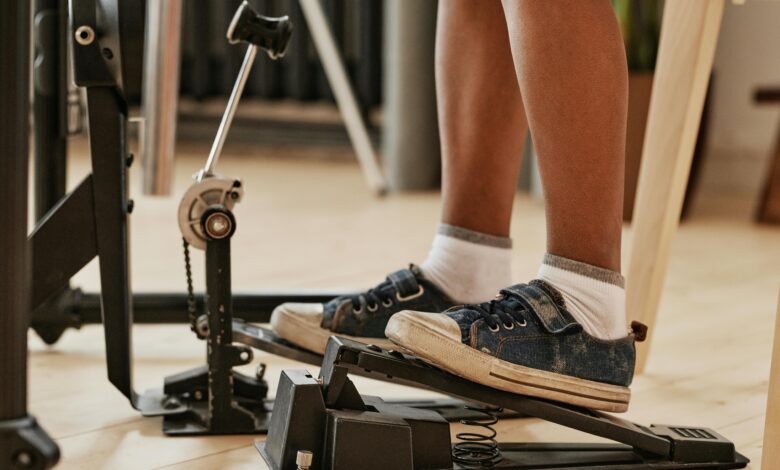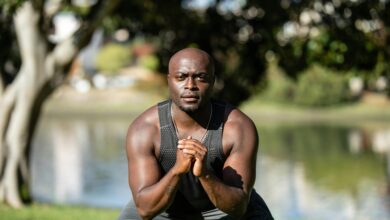Foot exercise machine: A Complete Guide to Healthy and Strong Feet

Our feet carry us every single day, yet they’re often the most neglected part of our body. Whether you’re an athlete, office worker, senior citizen, or someone recovering from an injury, maintaining foot health is vital. One tool that’s making a significant difference in this area is the foot exercise machine.
In this comprehensive guide, we’ll explore what foot exercise machines are, the different types available, their benefits, who should use them, and how to choose the best one. If you’re serious about mobility, balance, circulation, and overall foot wellness, this is the article you need.
What is a Foot Exercise Machine?
A foot exercise machine is a specialized device designed to improve the strength, flexibility, circulation, and coordination of your feet. These machines vary in type and functionality, from simple mechanical pedals to advanced electric massaging and stretching systems.
They are commonly used for:
Physical therapy and rehabilitation
Diabetes-related foot care
Office exercise for sedentary lifestyles
Reducing swelling and improving circulation
Improving balance and mobility in elderly users
With a wide array of designs, some focus on gentle movements for circulation, while others aim at active resistance-based workouts to strengthen foot and ankle muscles.
Why Foot Health Matters More Than You Think
The average person takes 5,000–7,000 steps per day, putting constant pressure on their feet. Poor foot health can result in:
Plantar fasciitis
Flat feet and collapsed arches
Bunions and toe deformities
Ankle instability
Poor posture and back pain
Regular foot exercises promote better posture, increased blood flow, reduced pain, and improved overall mobility. A foot exercise machine simplifies the process and makes it easier to maintain consistency.
Top Benefits of Using a Foot Exercise Machine
Here’s why more individuals are investing in foot exercise machines:
1. Enhanced Blood Circulation
Poor blood flow to the lower limbs is common in people with sedentary lifestyles or chronic conditions like diabetes. A foot exercise machine boosts circulation, reducing the risk of swelling, varicose veins, and deep vein thrombosis (DVT).
2. Improved Balance and Stability
As we age, balance becomes a critical concern. Using a machine that promotes toe-flexing, ankle rotation, and arch strengthening helps stabilize the body and prevent falls.
3. Rehabilitation Support
Whether you’re recovering from surgery, injury, or dealing with arthritis, foot exercisers offer gentle, low-impact movements that accelerate healing and maintain flexibility.
4. Pain Relief
Machines that include massage, heat therapy, or vibration can soothe aching feet, relieve plantar fasciitis pain, and reduce pressure-related discomfort.
5. Convenience and Consistency
Unlike sporadic manual foot exercises, machines offer consistent, targeted, and repeatable movements. You can use them at home, while watching TV, or even at your desk.
Types of Foot Exercise Machines
There’s no one-size-fits-all. Understanding the types of machines available can help you choose what suits your needs.
1. Motorized Leg and Foot Exercisers
These are often used for passive movement. Just place your feet, and the machine does the work, stimulating blood flow. Ideal for seniors or people with limited mobility.
2. Pedal Exercisers
These resemble mini-bikes and allow you to pedal using your feet. Great for desk jobs or light cardiovascular activity.
3. Vibration and Massaging Machines
These models improve circulation, reduce fatigue, and ease muscle tension. Often includes heat and intensity settings for a spa-like experience.
4. Stretch Boards and Rockers
Used primarily for stretching the arches and Achilles tendons. These are commonly used in physical therapy settings for targeted foot flexibility.
5. Resistance Bands and Compact Foot Gyms
Small yet effective, these require you to push, pull, or press with your feet, strengthening various muscle groups.
Who Should Use a Foot Exercise Machine?
Foot exercise machines are suitable for a wide range of people:
Seniors: For improving mobility, balance, and circulation.
Office Workers: Helps reduce foot numbness and leg stiffness due to prolonged sitting.
Diabetics: Enhances circulation, helping prevent complications from poor blood flow.
Athletes: Supports recovery, reduces injury risk, and maintains foot strength.
Rehabilitation Patients: Aids in healing after foot or ankle surgery.
Pregnant Women: Helps in relieving foot swelling and discomfort.
How to Choose the Right Foot Exercise Machine
Choosing the ideal machine depends on your individual needs. Consider the following:
1. Purpose
Are you aiming for passive movement, pain relief, or strengthening? Define your goals clearly.
2. Intensity Options
Look for machines with adjustable resistance or speed settings to accommodate your strength level or therapeutic requirements.
3. Portability
Some machines are large and stationary, while others are compact and easily portable. Consider your available space and whether you’ll use it at work or at home.
4. Noise Level
If you’re planning to use it in an office or shared space, look for quiet-operating models.
5. Durability and Warranty
Choose machines with a solid build and a good warranty period to ensure long-term use.
Best Practices for Using Foot Exercise Machines
To maximize the benefits of your machine:
Use it consistently, ideally 15–30 minutes daily.
Start slow and gradually increase duration and intensity.
Pair with hydration and stretching for optimal results.
Clean your machine regularly to maintain hygiene.
Consult a healthcare provider if you’re recovering from injury or surgery.
Common Mistakes to Avoid
Overuse: Excessive use can cause strain instead of healing.
Ignoring Pain: Stop if you feel sharp or unusual pain.
Wrong Machine: Using the wrong type of device may worsen your condition.
Poor Posture: Make sure you are seated or standing properly to avoid other issues like back or knee strain.
Real-Life Results: Testimonials
Sarah, 45, Office Manager:
“I started using a foot pedal machine at my desk, and it’s made a huge difference in how tired my feet feel at the end of the day. Plus, it’s helped my circulation!”
Mike, 62, Retired Teacher:
“After my ankle surgery, the passive foot exerciser helped me recover range of motion without pain. It’s a must-have for recovery.”
Jasmine, 30, Long-Distance Runner:
“I use a massage foot machine post-run. It prevents stiffness and has become part of my recovery routine.”
FAQs About Foot Exercise Machines
Q1: Can I use a foot exercise machine every day?
A: Yes, most foot exercise machines are designed for daily use. Just ensure you’re not overusing it and always follow manufacturer recommendations.
Q2: Are these machines safe for seniors?
A: Absolutely. Many models are specifically built for elderly users with features like low resistance, motorized movement, and anti-slip pedals.
Q3: How long should I use a foot exerciser?
A: A session of 15–30 minutes per day is effective for most users, but frequency may vary depending on your goals.
Q4: Can these machines help with plantar fasciitis?
A: Yes. Machines that focus on stretching the arch or include massage/vibration features can provide relief from plantar fasciitis.
Q5: Do foot exercise machines help with varicose veins?
A: They can aid in reducing the symptoms of varicose veins by improving lower limb circulation, especially in passive motion or vibration models.
Conclusion
A foot exercise machine is more than just a wellness gadget—it’s a smart investment in your mobility, comfort, and long-term health. Whether you’re looking to manage pain, improve circulation, recover from an injury, or simply add more movement into a sedentary lifestyle, the right machine can transform your foot health.
With many options available, take time to understand your needs, explore product features, and consult with professionals if necessary. Your feet are the foundation of your body—treat them with the care they deserve.


